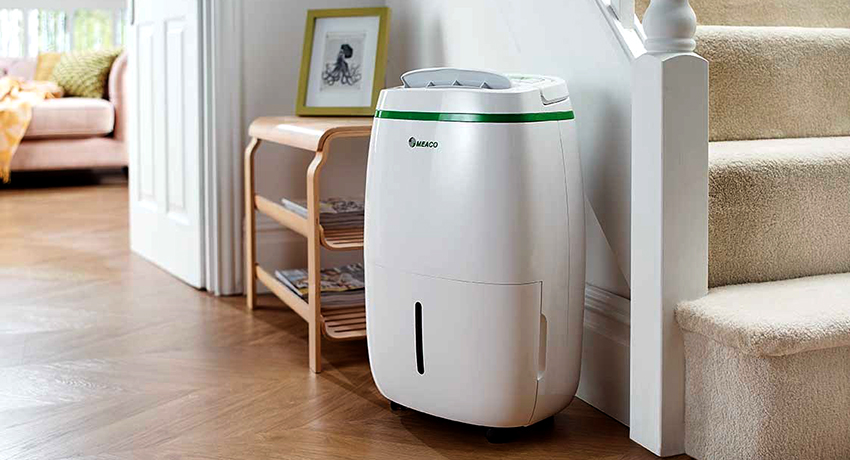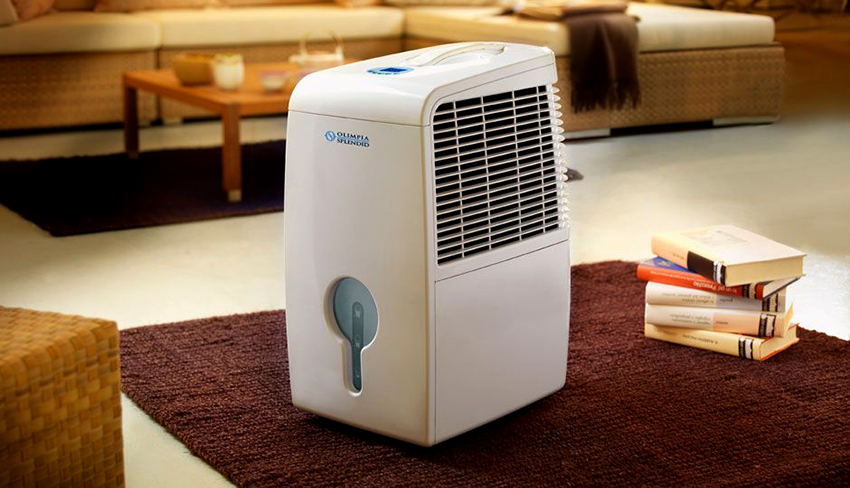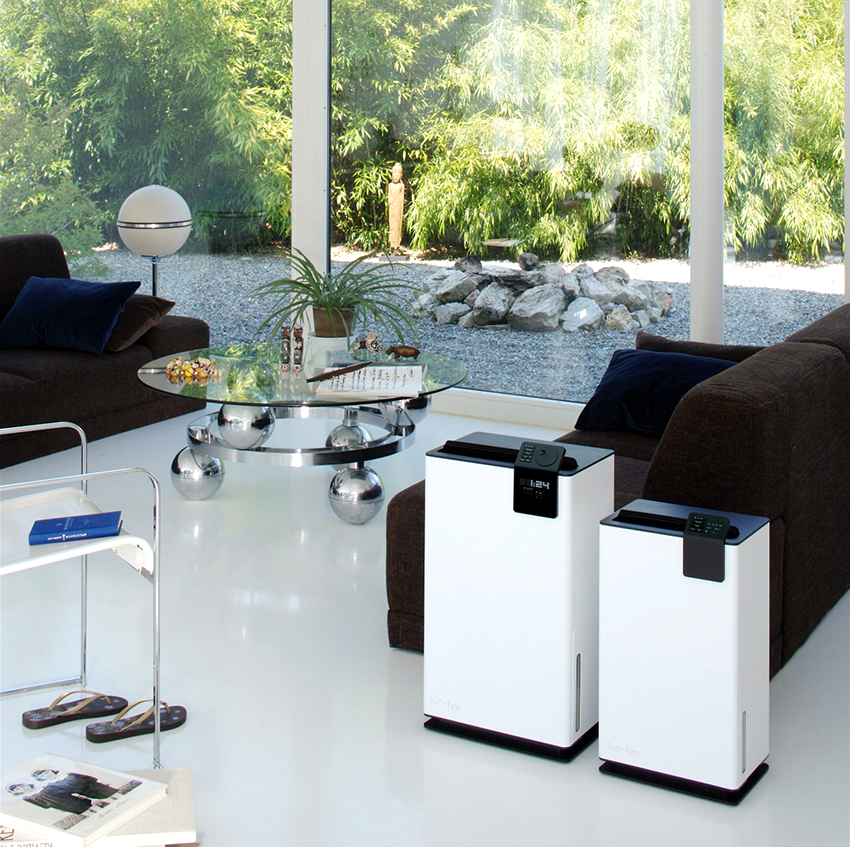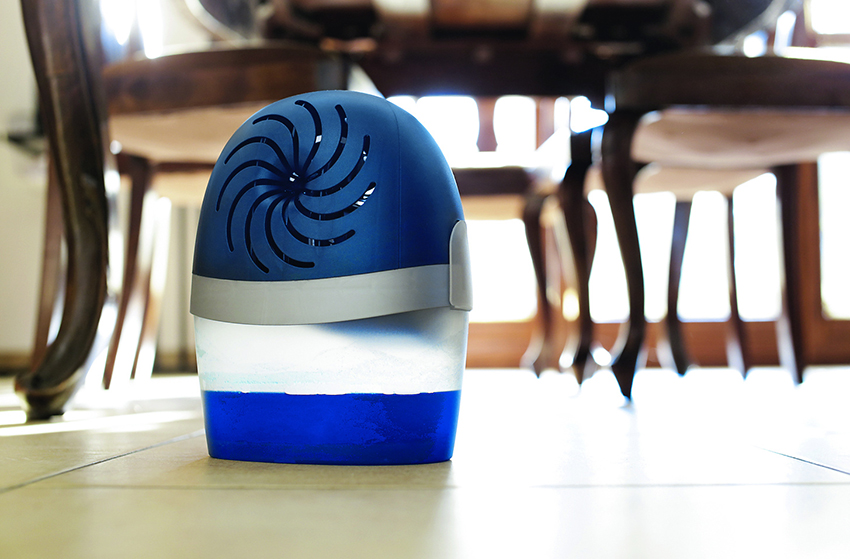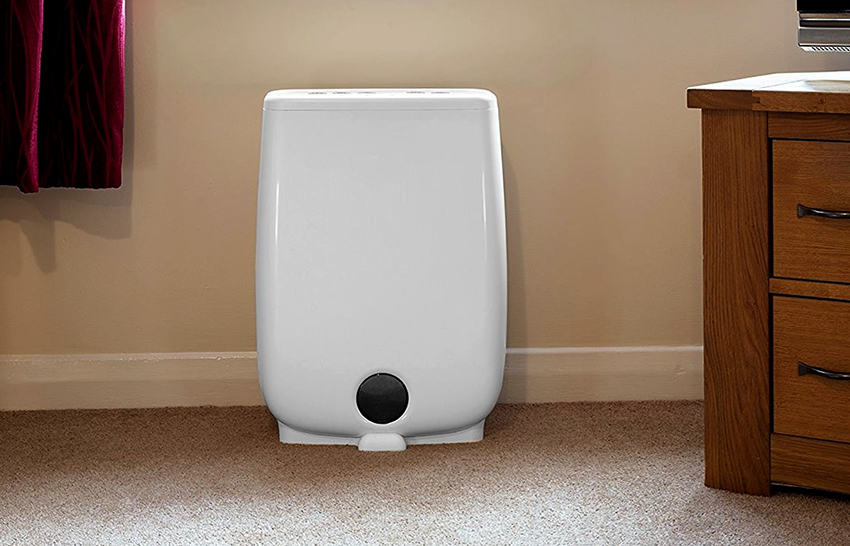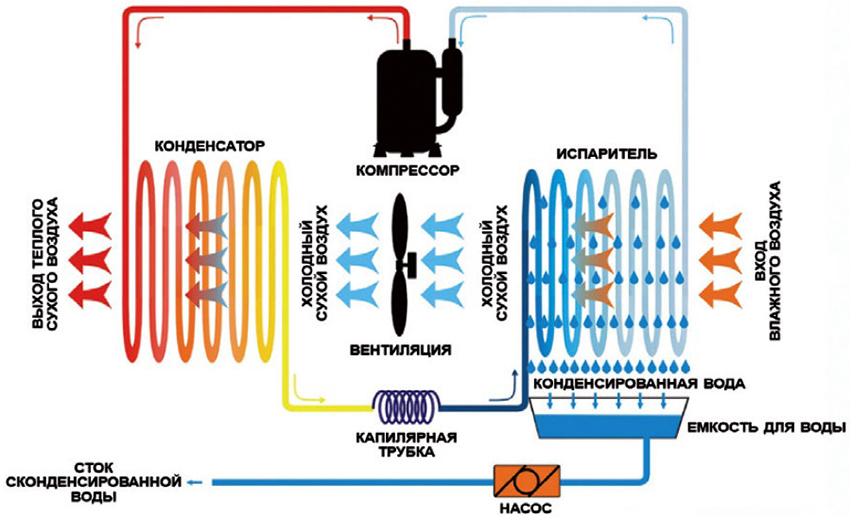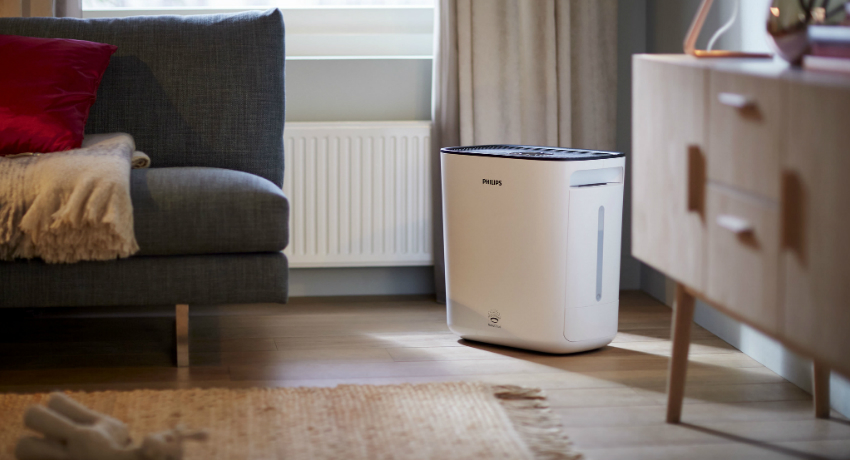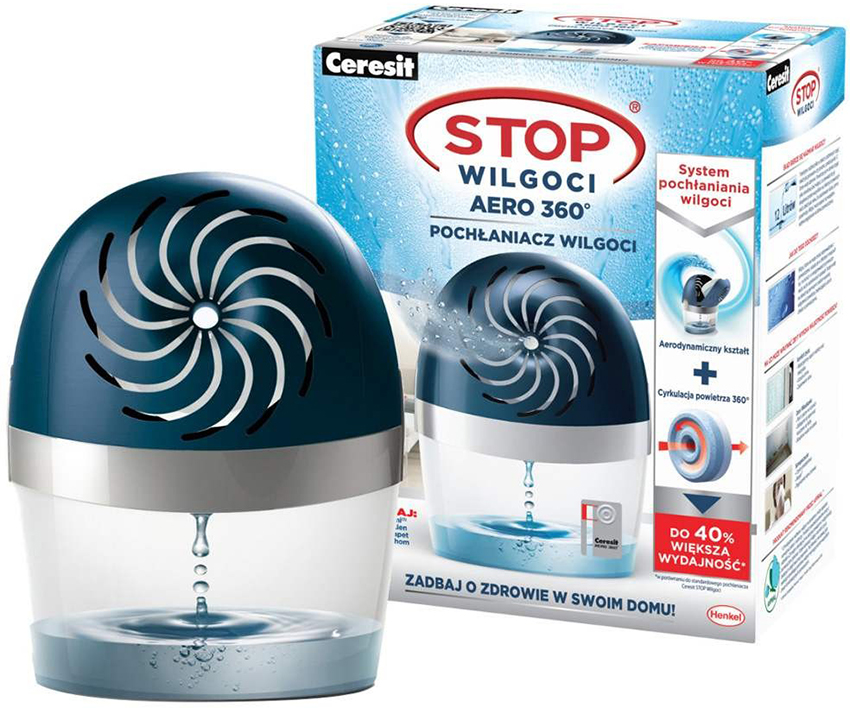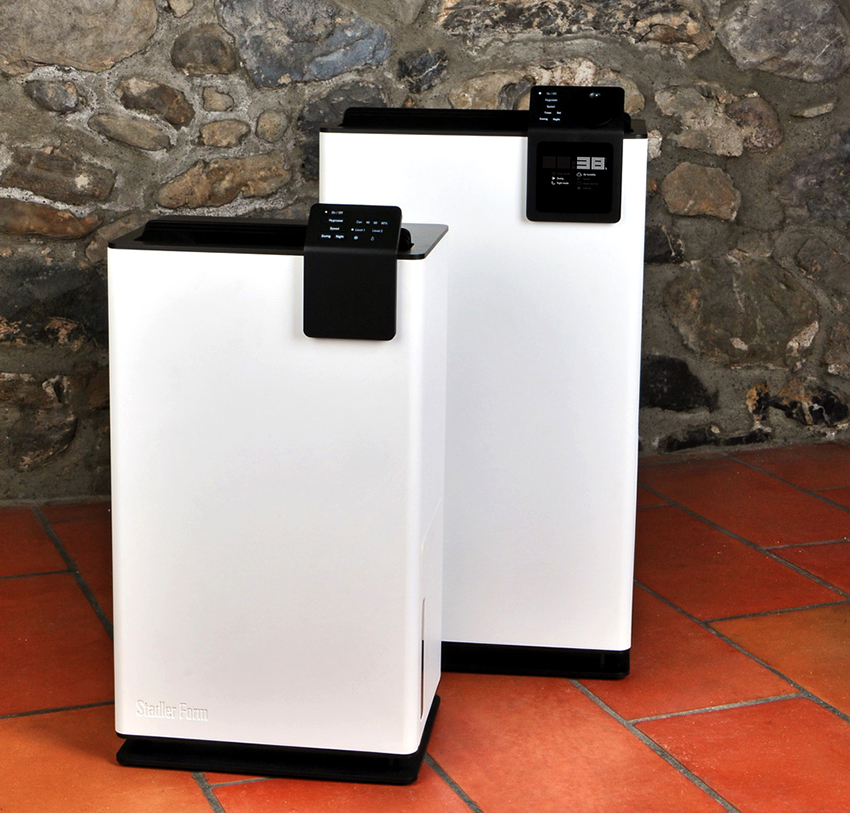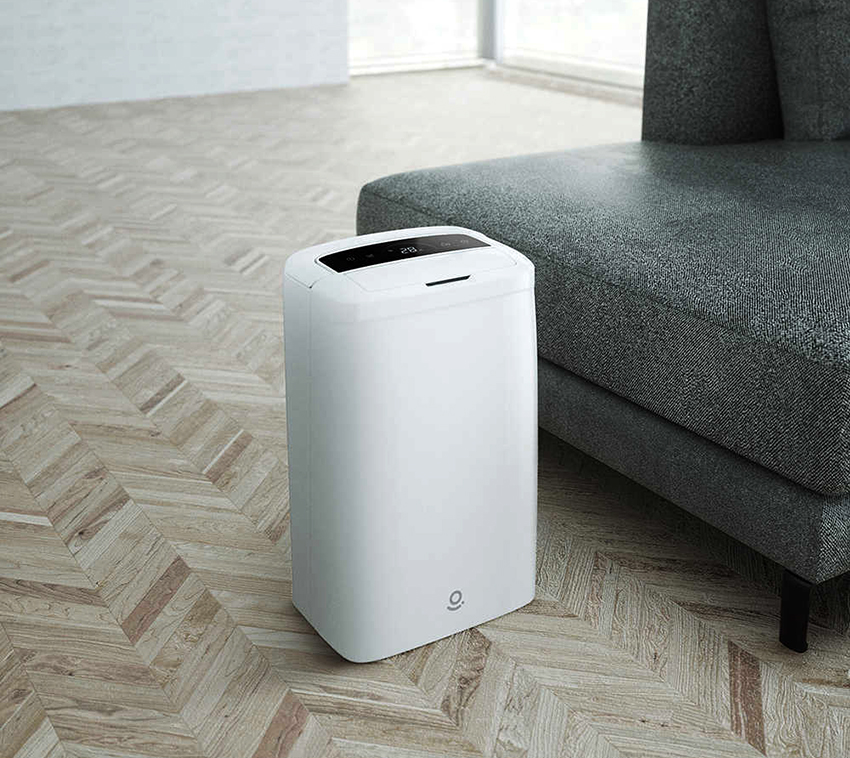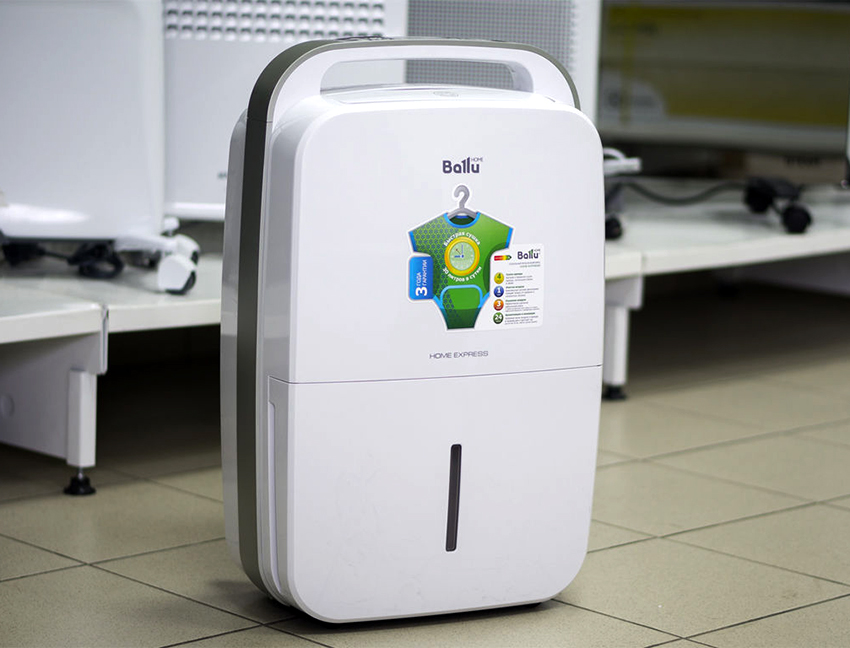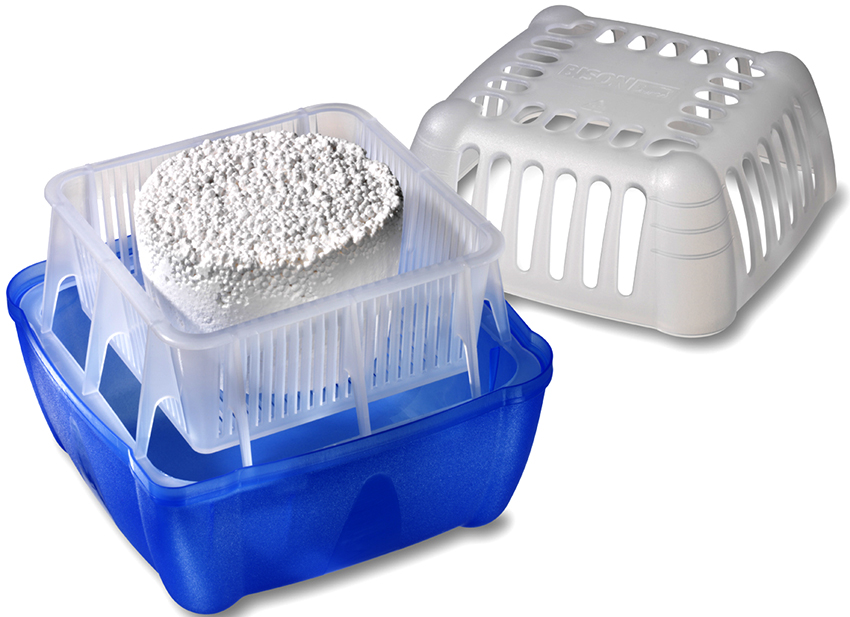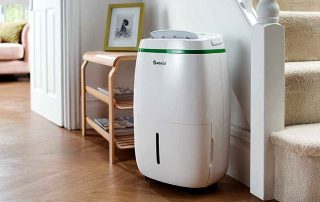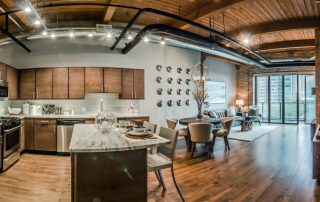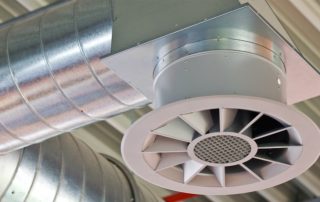Each invention is created to improve the quality of life. Doctors have long been focusing on the fact that both mood and human health depend on the microclimate formed in the apartment. Air quality is affected not only by temperature, but also by humidity, which sometimes exceeds the permissible standards (60-70%). A good way to normalize the indicators will be dehumidifiers for an apartment, eliminating excess moisture where it is needed.
Content [Hide]
- 1 Why is it recommended to purchase a dehumidifier for home
- 2 What are the benefits of dehumidifiers for an apartment
- 3 Types of desiccants for an apartment: absorbent and assimilating devices
- 4 What to look for before buying a moisture absorber "Stop humidity" and other models
- 5 Popular models of air dryers: prices and ratings
- 6 How to make a DIY desiccant air dryer
Why is it recommended to purchase a dehumidifier for home
The optimal parameters of humidity in a room are considered to be from 40 to 60%, the maximum allowable humidity is 70%. Anything higher or lower is considered a deviation from the norms that will have a detrimental effect on human health. If the decrease in humidity is usually associated with excessive heating of the home, then its increase often has more complex reasons, which are not so easy to deal with. The main causes of excess humidity in a room include:
- Disruption of natural ventilation. This often happens when debris accumulates in ventilation shafts or when the integrity of the mine is broken.
- Insufficient air intake. The reason is improperly installed plastic double-glazed windows with unregulated ventilation.
- The presence of an aquarium or a decorative fountain in the room, which lead to a large evaporation of moisture.
- The presence of a large number of indoor plants or a winter garden. In an effort to create a comfortable environment for flowers, they are often too often sprayed with water from a spray bottle, thereby significantly increasing the moisture reading.
- The location of the apartment is on the ground floor. If the location of offices is not planned in the basement of a residential building, then waterproofing the walls is not taken seriously, which becomes the reason for constantly wet surfaces in the apartments located above.
- Improper roof waterproofing. Rooms located under a poorly covered roof will always have high humidity in the wet season.
Experts note the following pattern: when humidity indicators are at least 10% higher than the maximum allowable parameters, the respiratory system begins to work incorrectly, which affects the general condition of a person. If you do not purchase a moisture trap for your home in time, there is a possibility of rapid growth of mold or mildew on walls and other surfaces.
Important! The appearance of fungal spores in the air and their active reproduction provokes diseases of the respiratory system. Over time, this can lead to the development of allergic reactions or chronic asthma. In addition, the visual organs begin to suffer.
As the hygrometer readings increase, molds develop, which most often multiply in the corners of the wall and ceiling. The more active their growth, the more pronounced the specific smell of mold becomes. With constant high humidity in the apartment, over time, the wall decoration begins to deteriorate, and the wooden surfaces swell, which can cause doors or cabinets to close poorly. Metal parts also suffer, which are exposed to rust, that is, corrosion develops.
What are the benefits of dehumidifiers for an apartment
To maintain normal humidity in the apartment, ventilation should be carried out more often and ventilation should be monitored. In most cases, such methods cannot solve the problem - and then it becomes necessary to purchase a moisture absorber for the house.
Industrial and household dehumidifiers differ depending on the way of use and the area of housing, the main difference between which is performance. This indicator directly depends on the amount of air in the room that needs to be passed through the system in order to bring normal humidity in the room. In an apartment or a small house, it is enough to install a device with a capacity of 15 to 50 liters. Industrial devices are capable of processing 3 times more - 50-120 liters.
The principle of operation of an air dehumidifier depends on the model, but in general, in terms of functionality, the devices have a similar scheme: they draw in waterlogged air, process and remove not only moisture, but also harmful microorganisms from it, and then release purified and dry air into the room.
Despite its small size, household dehumidifiers can be used for basement, garage, and even small office or warehouse environments. With proper use, the devices ensure the normalization of humidity indicators in the place where people directly live. According to reviews, air dryers for apartments have the following advantages:
- increase the service life of building structures;
- protect housing from fogging and condensation on windows and other glass surfaces;
- prevent the swelling of furniture, books, musical instruments and other items made with wood or metal;
- increase the shelf life of bulk food and construction products, as well as medicinal products;
- eliminate the consequences of flooding;
- promote faster drying of clothes and shoes;
- reduce heating costs, because less heat energy is required to warm air with normal humidity;
- do not take up much space in the apartment.
You can also use a desiccant dehumidifier in the bathroom, which is considered the wettest room where it is difficult to achieve normal performance. In addition to the basic function of moisture absorption, many models have additional settings that provide ionization and disinfection.If you use special means, you can scent the room, filling it with pleasant smells.
Types of desiccants for an apartment: absorbent and assimilating devices
The principle of operation of an adsorption air dryer is based on the moisture absorption method, which is one of the most effective. In this case, excess moisture is absorbed or removed. This type of dehumidifier is used both at home and in production. The device is especially optimal for poorly heated rooms, because its operation can be carried out even at negative ambient temperatures.
The principle of operation of the device consists in the passage of an air stream through a drum or rotor, inside which an absorbent substance is contained on a glass fiber carrier. The adsorbent is a highly dispersed material with a large specific surface, due to which excess moisture is absorbed. Silica gel is most often the absorbing substance, but sometimes it is activated alumina or zeolite.
The drum of the device is constantly in operation, it is through it that air flows penetrate into the system. Excess water vapor is absorbed by the silica gel, and the dried air is returned to the room. To remove moisture accumulated in the adsorbent, part of the air is separated, which then passes through a built-in heating element, which raises its temperature to 140 ° C. It is this temperature that is required to restore the properties of silica gel.
The heated air is then passed through a small part of the drum, leaving the moisture absorbed by the sorbent there, and returned to the room. This is how the working diagram of a hot regeneration air dryer looks like, the cycle of the device repeats itself all the time.
Important! Whatever method of regeneration the device is different, all the same, the air is preliminarily cleaned from mechanical impurities and excess moisture.
The cold regeneration principle looks a little different. In this case, the recovery of the absorbent is carried out by removing and blowing the adsorbing agent with a part of the dried air, which is then returned to the total air mass. The main advantage of the method is significant energy savings, reaching 10-15%. The presence of special filters prevents rapid contamination of the adsorbent, which increases the service life of the device. It should be noted that due to the high cost of the device itself and subsequent maintenance, it is rarely recommended for domestic needs.
The principle of assimilation is to normalize humidity indicators through air exchange between the environment and the apartment. In this case, humid air from the room is removed outside, while fresh air is sucked in from the street. This circulation leads to the normalization of indicators. The use of supply ventilation to dehumidify the air in the room, in addition to solving the main problem, helps to stabilize the level of carbon dioxide and normalize the temperature.
The disadvantages include significant heat loss, as well as a large consumption of energy required to warm up the air entering the interior. It is pointless to use such a device in a region with a humid climate. It is important to remember that for the device to work properly, the windows and doors in the room must be closed, otherwise the required indicators may not be achieved.
How does a dehumidifier for an apartment of a condensing type work?
This option is considered the most common and popular. It is condensation models that are widely represented in shopping centers. The price of air dryers of this type is lower than the cost of adsorbing models, additionally they differ in the following advantages:
- high power;
- low power consumption;
- long service life;
- no need for frequent service.
The operation of the condensing device begins immediately after switching on the device, when excessively humid air is forcibly pumped in and passes through a special compartment, where it is cooled to the dew point temperature. After reaching the desired temperature, the humid air turns into water droplets that collect in the trap. In general, the design of a desiccant for a home consists of the following elements:
- condenser or evaporator;
- air compressor;
- capillary tube;
- containers for collecting moisture.
The initial intake of air is carried out using a fan built into the device. Subsequent cooling is provided due to the contact of the air mass with the heat exchanger, to which the refrigerant flows through copper pipes. When exposed to warm air, the refrigerant is converted from a liquid to a gaseous state. This process is accompanied by the cooling of the heat exchanger to 1 ° C.
The consequence of this temperature difference is the formation of condensate in the form of drops. After the release of water droplets, the fan returns the drawn air back into the room, and the refrigerant enters the compressor, where it is converted to its original liquid state. Accordingly, there are 3 main stages that air flows pass through, entering the device:
- decrease in temperature indicators;
- the release of condensate after reaching the dew point;
- warming up to normal temperature.
Interesting information! Before the air returns to circulation, foreign particles and other unwanted impurities in the air are removed.
Despite the large number of advantages, according to reviews, condensing-type air dryers also have disadvantages. The main disadvantage is considered to be the operation of the device only in a certain temperature range - from 15 to 30 ° C, which often does not allow it to be used in a cold basement or garage. In addition, the dehumidifier is not suitable for rooms where the humidity needs to be kept below 40%, because it will not cope with this task.
What to look for before buying a moisture absorber "Stop humidity" and other models
Before you buy a dehumidifier for an apartment, you should make sure that it is advisable to purchase a device. First, you need to get a moisture meter - a hygrometer, which will make it possible to understand the presence or absence of a problem. It is necessary to determine the humidity in all rooms in order to know where the absorber should really be installed.
If the problem of humidity cannot be solved by the usual methods and it is decided to purchase an air dryer, experts recommend paying attention to such an indicator as productivity. This parameter is considered the most important when choosing a device model. The indicator is calculated in liters per hour or per day.
Related article:
Air ionizer: everything about the operation and features of using the device
What is it for, and how to choose the right device. How to make an ionizer for your home or car with your own hands. Popular models.
Performance should be selected based on the volume of the room. Most often, a simple formula is used for this, where the area of the room is multiplied by a factor of 0.7. After calculations, it will be possible to get only an approximate number, because temperature and initial humidity are not taken into account here.
Helpful advice! It is recommended to purchase a model with a small performance margin, because if the power is not enough, the absorber will work for a long time without interruption, which will lead to its overheating. Too high performance should also not be chosen, because the operation of such a device will be accompanied by excessive noise.
Another important characteristic is air exchange. Devices that can drive air through themselves in an hour to four times are considered optimal. The indicator directly depends on the volume of the room, which can be calculated by multiplying the length by width and height. So, for a room 4 m long and 3 m wide, with a standard ceiling height of 2.75 m, the volume will be 33 m³. To run this volume 4 times, you need a device with an air exchange rate of 132 m³ / h.
Other indicators to look for when buying dehumidifiers
Power or energy consumption level. This indicator directly depends on performance. Accordingly, the higher it is, the greater the energy consumption. Modern appliances use technologies that save energy consumption. The choice of the optimal power depends on how often you plan to use the device.
Noise level. The average noise level of the devices is 40-45 dB. If the absorber is too noisy, you will not want to use it often.
Drainage system. There are 2 types of outlets in dehumidifiers: storage and drainage. The accumulative type assumes the presence of a container for collecting the secreted liquid, which must be emptied from time to time. The more humidity in the room, the more preference should be given to the tank volume. The drainage type empties itself and does not require external intervention.
Weight and size. Depending on the features of operation, mobile or stationary models are selected. Portable versions are characterized by smaller dimensions and are divided into 3 types: wall, floor or table. For a large room or basement, you can use an overall stationary model.
Additional functionality. Many options help to make the work with the device more comfortable. So, you can use a timer that will limit the operating time, which will allow you to save on electricity and reduce the likelihood of repairing the air dryer due to less wear on parts. Another useful feature is the built-in hygrometer, which allows you to evaluate the humidity in the room. Some models are equipped with an automatic switch-on sensor that reacts to an increase in humidity values above normal.
Cost. The price of a dehumidifier for an apartment depends on the capabilities of the device, as well as on the availability of additional functions, the need for which must be assessed before purchasing.
Some models differ in the 2 in 1 principle, when one device simultaneously performs the function of dehumidification and purification or ionization of air. If the device has a whole set of options at once, it is called a climate complex.
Popular models of air dryers: prices and ratings
The Duracraft model is distinguished by its attractive design and good functionality. The dehumidifier is characterized by comfortable handles and wheels with which you can move the device. The dryer weight is 15 kg. The system has a simple principle of operation, when moist air is absorbed and dried. Moisture is collected in a special vessel, and dry air is discharged back through the ventilation grilles located on top of the device.
The device is serviced independently; this requires removing the filter, rinsing it and removing dust.The filling of the container with water is signaled by a special indicator. The main disadvantage is the loud operation of the air cleaner. The price of an air dryer is 15 thousand rubles.
The Ballu model is characterized by small dimensions and, as evidenced by reviews, is considered the most mobile. The body is made of high quality plastic and a built-in handle is used for carrying. Air is drawn in through the back of the appliance, where the filter is located, and cleaned air is expelled through the side and top grilles. Main characteristics:
- the dehumidifier is designed to dry 15 liters of water;
- when filling a container with water, the device automatically turns off;
- upon reaching normal humidity in the room, the absorber switches to standby mode.
According to reviews, the dehumidifier has the following disadvantages: a short cord for plugging in, as well as a high noise level. Price - from 12 thousand rubles.
The stylish Dry Master dehumidifier has a capacity of 10-50 l / day and is equipped with a built-in control panel. The liquid is collected in a reservoir at the bottom. Thanks to electronics, you can accurately set the required humidity in the room (from 35%). The timer allows you to set the desired operating time, after which the device turns off. The disadvantage is the complexity of the purchase, because not all stores have a model in stock. The price varies from 10 to 15 thousand.
How to make a DIY desiccant air dryer
The simplest version of an air dehumidifier for an apartment with your own hands is considered to be an adsorbent absorber, the manufacture of which does not require significant costs, both in terms of finance and time. To create a moisture absorber with your own hands, you need 2 plastic bottles with a volume of 2 liters. Sequencing:
- Make many holes at the bottom of one bottle and cut it into 2 parts.
- In the cut off part of the bottle, place the 2nd part, opened with the neck down. At the same time, a cover with a large number of holes is screwed onto the thread.
- An adsorbing substance is poured into the upper part of the structure, most often silica gel in the amount of 250 grams.
After that, you will need to cut off the bottom of the 2nd bottle and place a small fan there, which will draw air towards the cut bottom. For this purpose, a small USB fan or a cooler from an old processor is suitable. The pressure unit is placed 10 cm from the cut bottom. Then this bottle is put on a container with a sorbent, and the joints are qualitatively wrapped with electrical tape. The neck of the 2nd bottle must be open to allow air to enter. A fan in a hand-made desiccant will blow air through the silica gel, after which dry air will come out through the perforated bottom.
High moisture content in the air causes not only health problems, but also leads to damage to furniture, books and other objects. A dehumidifier will help prevent the development of fungus and condensation. The devices are not very expensive, and if you wish, you can make a simple device yourself.
